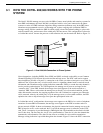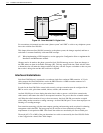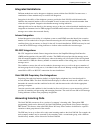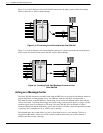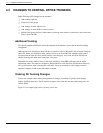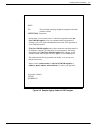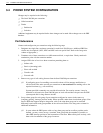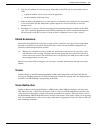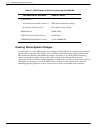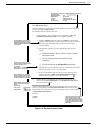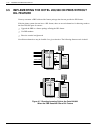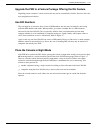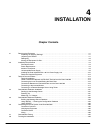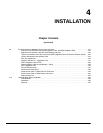
Preparing the Phone System 3-9
Octel 200/300 S.4.1PB60019−01
6. Note the pilot number for each hunt group. Depending on the PBX type, the pilot number may be
either
- a phantom number with no actual extension appearance
- the first extension of the hunt group
7. Make the hunt group number easy to enter and easy to remember, since employees use this number
to access the Octel 200/300. Most phone systems support use of an auto-dial key to reach the
message server.
8. Determine how to set up a fail-safe answering position based upon features available for the PBX
type. This is generally programmed in the PBX by indicating an overflow extension when ports in
the hunt group are not able to answer. If none of these are permitted, refer to item 5 (above).
Called Extensions
Because the Octel 200/300 provides call coverage for busy extensions, any type of call waiting feature
provided by the PBX is not required. This feature may be removed from the PBX configuration for
extensions called through the Octel 200/300.
. When a busy extension receives a second call, notification of the second call is given by a tone
that indicates a call is waiting. The busy extension may ignore the tone or place the first call on
hold to answer the second. The notification tone is only heard by the called person and the caller
hears ringing instead of a busy tone.
Remove any system call forwarding for call coverage to a number other than the message server pilot
number.
Trunks
Possible changes to the PBX trunk programming include redirecting trunks to the Octel 200/300 and
assuring any trunking changes do not affect the selection of trunks for outgoing calls. No changes need to
be made to the DID trunking or programming in the PBX.
Trunk Redirection
Trunks are directed to the Octel 200/300 via a PBX feature. Many PBX manufacturers call this feature
DIL, Direct In Lines, or DIT, Direct In Trunks. Table 3-1 lists several PBX manufacturers and the name
of that feature for their phone systems. If the phone system does not provide a DIL-type feature, refer to
the Implementing PBXs Without DIL Feature section in this chapter. If the phone system you are working
with is not mentioned here, and you are trying to determine the appropriate feature, first look for DIL, the
most commonly used name.



